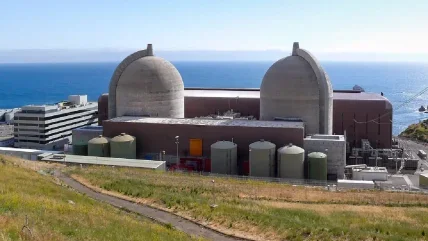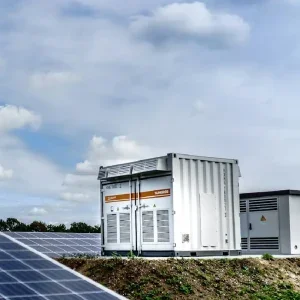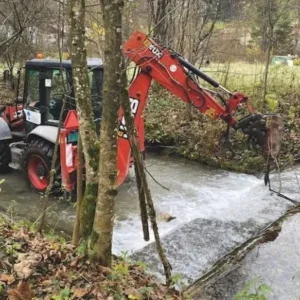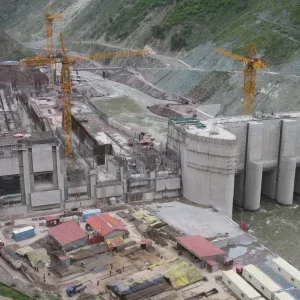
In November 2023, Pacific Gas and Electric Company (PG&E) submitted an operating licence renewal application to the US Nuclear Regulatory Commission (NRC) for its two-unit Diablo Canyon nuclear power plant. It sought to add 20 years to the facility’s lifetime, so that Unit 1’s operating licence would be extended from midnight on 2 November 2024, to midnight on 2 November 2044, and Unit 2 would be extended from midnight on 26 August 2025, to midnight on 26 August 2045.
The submission was a remarkable turnaround from the situation five years ago, when in April 2018 the NRC granted a request from PG&E to withdraw a licence extension application that had been submitted in November 2009. The company said the decision to withdraw the application at that time was based on the determination by California’s Public Utility Commission (CPUC) that continued baseload operation of the two units was not necessary to meet California’s projected energy demand.
What had changed? In September 2022 California Governor Gavin Newsom signed a bill (Senate Bill No. 846 (Dodd)) that reversed the 2018 CPUC decision. PG&E notified the NRC of the intent to submit a new application by 31 December 2023. In response, NRC said the plant could continue to operate under its current licence, because “if Pacific Gas and Electric submits a license renewal application no later than December 31, 2023, and if the NRC Staff finds it acceptable for docketing, the existing operating licenses for Diablo Canyon Power Plant, Units 1 and 2 will be in timely renewal under NRC regulations until the NRC has made a final determination on the license renewal application.”
Licence renewal application
The letter came with a licence renewal application running to nearly 3,000 pages which is being reviewed by the NRC staff to determine whether it is sufficiently complete to begin the agency’s extensive safety and environmental reviews. The application is publicly available and the following abstracts regarding the steam generators give a flavour of its depth of detail.
The Diablo Canyon steam generator ageing management programme (AMP) covers tubes, plugs, divider plate assemblies, tube-to-tubesheet welds, heads (interior surfaces of channel or lower/upper heads), tubesheets (primary side), and secondary side components within the steam generators.
Steam generator tube integrity can be affected by degradation of steam generator plugs, and secondary side internals. Non-destructive examination (NDE) techniques identify components with degradation that may need to be removed from service, repaired or replaced. They follow the NRC’s NEI 97-06, Revision 3, Steam Generator Program Guidelines, which includes performance criteria to provide assurance that tube integrity is being maintained and guidance for monitoring and maintaining the tubes to provide assurance that performance criteria are being met between scheduled inspections.
Inspection frequency is governed by the Diablo Canyon Technical Specifications and the inspection scope and methods are evaluated as part of a degradation assessment made before refuelling outages. It assesses degradation of all components that affect steam generator tube integrity such as tubes, plugs, and tube supports. Tube sleeves are not an approved method of repair at Diablo Canyon. Plugging criteria for removing tubes from service are consistent with the technical specifications.
The AMP includes foreign material exclusion guidance and plant procedural guidance includes measures to prevent the introduction of foreign material when access is provided to the primary and secondary sides of the steam generators. A secondary side foreign object search and retrieval effort is conducted when the hand hole covers are removed for maintenance to search for and remove any identified loose parts and foreign material.
During each outage when tubes are inspected or plugged, a condition monitoring and operational assessment is conducted to confirm that the structural and leakage integrity performance criteria have been satisfied.
The objective of the inspections is to ensure that the components continue to function consistently with the design and current licensing basis of the facility. These inspections, based on the plant’s technical standards, are performance-based, and the actual scope of the inspections and the expansion of sample inspections are justified based on the results of previous inspections. If degradation or evidence of degradation is detected, then more detailed inspections or evaluations are to be performed.
The programme procedures reflect these requirements and outline the inspection programme to detect degradation of tubes, plugs, and secondary side internals, as well as providing inspection frequencies. The inspections and monitoring are performed by qualified personnel using qualified techniques. A so-called Primary-to-Secondary Leakage Monitoring Program is a further potential indicator of a loss of steam generator tube integrity.
A condition monitoring assessment is performed at the conclusion of each inspection to determine whether inspection criteria is met. An operational assessment, which is a forward-looking evaluation, is used to determine whether the structural integrity and accident leakage performance will be acceptable during the operating interval until the next in-service inspection.
Degradation of divider plate assemblies, tube-to-tubesheet welds, heads (internal surfaces), or tubesheets (primary side) may have safety implications. Therefore, all of these components, as well as the steam generator tubes, plugs, and secondary side components, are included in the asset management programme.
The steam generators at Diablo Canyon – four in each unit – were replaced with Westinghouse Delta 54 models, which contain Alloy 690 thermally treated tubes. The replacement took place in 2008 for Unit 2 and in 2009 for Unit 1. The tubing and secondary internals in these units are more resistant to corrosion. There have been no reported instances of cracking in thermally treated Alloy 690 tubes at any plant in the USA. All degradation indications to date are from wear (fretting) due to loose parts, tube supports or anti-vibration bars, or from manufacturing or handling anomalies. A690TT was used as the tubing material for some initial replacement steam generators and some original steam generators in the USA.
An NRC information note, Experiences During Recent Steam Generator Inspections, addressed the importance of recognising potential degradation in new areas and of assessing the significance of indications. At Diablo Canyon, the assessment evaluates industry experience as well as that at the plant itself to identify active, relevant and potential tube damage mechanisms. Some of the important features of the Degradation Assessment include choosing techniques to test for degradation based on the probability of detection and sizing capability, establishing the structural limits, and establishing the flaw growth rate or a plan to establish the flaw growth rate.
Operating experience
The licence renewal application details operating experience at several reactors.
In 2012 indications related to cracking were found at dents/dings and in the freespan region in A600TT tube at Seabrook 1. In 2012 bobbin coil inspections and a further inspection using a rotating probe with a +Point coil confirmed the presence of axially oriented outside diameter stress corrosion cracking (ODSCC) in several areas around dents and dings. Seabrook revised its inspection scope to include 100% of dings and dents with bobbin voltage amplitudes greater than 5 volts and 20% of those with bobbin amplitudes of greater than 2 volts. Tubes with axially oriented ODSCC were removed from service by plugging both tube ends.
In 2012 at Braidwood 2 a tube in the Westinghouse Model D5 steam generators was found to have three indications of axially oriented ODSCC, two at tube support plate elevations and one in the freespan area between two support plates at a ding in the tubing. The tube was plugged at both ends. Reanalysing bobbin coil data found no additional crack-like indications.
In 2009 at Surry 1, an indication of axial primary water stress corrosion cracking (PWSCC) was found at the hot-leg expansion transition (top-of tubesheet) in one steam generator with A600TT tubing. Further examination at all three steam generators at Surry 1 found no other indications of PWSCC. After an in-situ pressure test the tube was removed from service.
A review of Diablo Canyon operating experience revealed no instances of degradation similar to those at Seabrook, Braidwood and Surry. At the plant Bobbin coil inspections are conducted tube end to tube end, with +Point probe inspections completed for areas of interest (as determined during bobbin coil inspection).
In 2012, the San Onofre Nuclear Generating Station (SONGS) identified significant anti-vibration bar and tube-to-tube wear in replacement steam generators. This is an industry anomaly for units operating with A690TT tubing. The wear discovered at SONGS 2 and 3 was caused by in-plane fluid elastic instability. It is not considered relevant for Diablo Canyon’s replacement steam generators as they have already operated for multiple fuel cycles without similar degradation and the steam generators have a different design.
A review of operating experience over the 10 years to 2023 has not revealed any instances of severe degradation at Diablo Canyon. Eddy current testing during refuelling outages revealed a few instances of AVB wear and a small number of tubes have been plugged, but in no instance were the condition monitoring limits exceeded, so performance criteria was satisfied.
Given this evidence, the condition of steam generators at Diablo Canyon are not expected to impede a decision on life extension to Unit 1’s operating licence out to November 2044, and Unit 2 through to August 2045.
This article first appeared in Nuclear Engineering International magazine.






